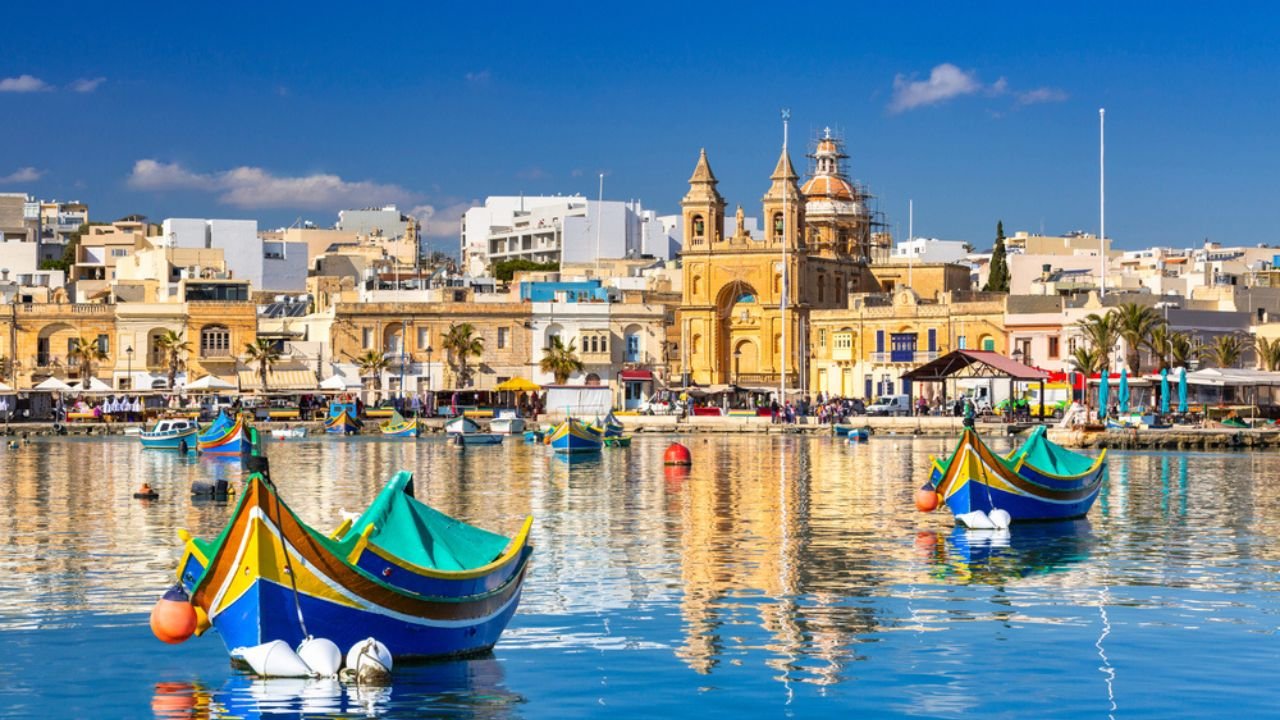Malta, a tiny archipelago in the central Mediterranean, is a treasure trove of history, culture, stunning landscapes, and vibrant local life. Its strategic location has made it a crossroads of civilizations for thousands of years, resulting in a rich tapestry of archaeological sites, picturesque towns, and natural wonders. Whether you’re a history enthusiast, nature lover, or adventure seeker, Malta offers something for everyone. This guide explores the must-see sights and must-do activities to make your Maltese experience unforgettable.
1. Discovering Malta’s Rich History and Heritage
a. Valletta: The Fortress City
Valletta, Malta’s capital, is a UNESCO World Heritage Site and a UNESCO-listed historic city. It’s a treasure chest of Baroque architecture, historic sites, and vibrant street life. Key attractions include:
- St. John’s Co-Cathedral: An architectural masterpiece with a stunning interior, elaborate gold decoration, and Caravaggio’s famous The Beheading of John the Baptist.
- Grandmaster’s Palace: The seat of the Maltese Parliament, featuring impressive state rooms and the Armoury Museum.
- Upper Barrakka Gardens: Offering panoramic views of the Grand Harbour, a perfect spot for photos and relaxation.
- National War Museum: Located in Fort Saint Elmo, showcasing Malta’s military history.
Tips: Walk along Republic Street, explore the narrow alleys, and enjoy local cafes and shops.
b. Mdina: The Silent City
Mdina, known as the “Silent City,” is Malta’s ancient capital and a medieval fortified town. Its winding streets, grand palaces, and ancient walls transport visitors back in time.
- Mdina Cathedral (St. Paul’s Cathedral): A beautiful baroque church with a rich history.
- The Mdina Dungeons: A haunting museum depicting Malta’s darker history.
- Views from the city walls: Overlooking the countryside and the sea.
Activities: Wander through narrow alleys, enjoy panoramic views, and visit local artisan shops.
c. The Hypogeum of Hal Saflieni
An extraordinary underground prehistoric temple and necropolis, the Hypogeum dates back to around 4000 BCE. It’s one of the world’s most significant archaeological sites.
Note: Tickets are limited and must be booked well in advance due to strict visitor caps.
d. The Temples of Malta
Malta is home to some of the world’s oldest free-standing stone structures, predating the pyramids.
- Ħaġar Qim and Mnajdra Temples: Located on the southern coast, these megalithic temples are UNESCO World Heritage sites, showcasing impressive stonework and ancient rituals.
- Tarxien Temples: Near Valletta, these temples contain intricate carvings and altars.
2. Exploring Malta’s Natural Beauty
a. Blue Lagoon, Comino
A highlight for many visitors, Comino is a tiny island famous for the Blue Lagoon, a turquoise, crystal-clear bay ideal for swimming, snorkeling, and relaxing on white sandy beaches.
Activities: Snorkel among colorful marine life, take boat trips, or simply unwind in the sun.
b. Dingli Cliffs
For breathtaking views, visit the Dingli Cliffs on the western coast. The rugged cliffs rise sharply above the sea, offering spectacular sunsets and photo opportunities.
Tip: Combine this visit with nearby villages like Rabat and Mdina.
c. Gozo: Malta’s Sister Island
Gozo offers a more rural, laid-back atmosphere with stunning landscapes and historical sites.
- Azure Window (collapsed in 2017): Though the iconic arch is gone, the site remains a popular diving spot.
- Ggantija Temples: Older than Stonehenge, these megalithic temples are UNESCO sites.
- Victoria (Rabat): The island’s main town with a citadel offering panoramic views.
- Dwejra Bay: Famous for its natural inland sea and unique rock formations.
d. Comino’s Santa Maria Bay and San Niklaw Bay
Ideal for water sports, swimming, and boat excursions, these bays are less crowded and offer pristine waters.
3. Cultural Experiences and Festivals
a. Maltese Festivals and Feast Days
Malta’s vibrant festivals are rooted in religious traditions and local culture.
- Feast of St. Paul’s Shipwreck (February): Celebrations in Valletta and Valleys.
- Feast of St. George (April): Celebrated in many towns with fireworks and processions.
- Il-Festa tal-Milied (Christmas): Festive lights, nativity scenes, and processions.
- Carnival (February/March): Colorful parades and costumes.
Participating in these festivals offers an authentic glimpse into Maltese life.
b. Traditional Maltese Cuisine
Sample local dishes such as:
- Fenkata: Rabbit stew, Malta’s national dish.
- Pastizzi: Flaky pastry filled with ricotta or pea.
- Bragioli: Beef olives.
- Lampuki Pie: Fish pie made with mahi-mahi.
- Kinnie: Maltese soft drink with a unique bitter flavor.
Visit local markets, such as the Marsaxlokk Fish Market, for fresh seafood and local produce.
c. Craftsmanship and Art
Explore artisan workshops producing traditional Maltese lace, filigree jewelry, and ceramics.
4. Outdoor Activities and Adventure
a. Diving and Snorkeling
Malta boasts some of the best diving spots in the Mediterranean, featuring clear waters, abundant marine life, and fascinating wrecks.
- USS LST 325: A WWII shipwreck accessible to divers.
- Blanche Baracuda Wreck: A popular wreck with rich marine biodiversity.
- Cirkewwa: The main diving hub with multiple dive sites.
b. Hiking and Walking Tours
The scenic countryside, coastal trails, and historic towns are perfect for walking.
- The Malta National Trails: Long-distance trails exploring the countryside.
- The Three Cities: Vittoriosa, Senglea, and Cospicua, with narrow streets and historical fortifications.
c. Water Sports and Adventure Activities
- Kayaking and Paddleboarding: Along the coast and in bays.
- Cliff Jumping: At Dingli Cliffs and other rugged coastlines.
- Sailing and Boat Trips: Explore hidden coves and remote beaches.
5. Unique Experiences in Malta
a. Mdina Night Tour
Experience the silent city after dark, with its atmospheric streets lit by lanterns, offering a different perspective on this ancient town.
b. Maltese Nightlife and Entertainment
- St. Julian’s and Paceville: The nightlife hubs with bars, clubs, and casinos.
- Live Music and Cultural Events: Check local schedules for concerts, theatre, and dance performances.
c. Visit a Traditional Maltese Village
Explore villages like Żebbuġ or Naxxar to see rural life, local churches, and traditional festas.
d. Maltese Language and Folklore
Learn a few Maltese phrases; the language is a unique blend of Semitic and Romance influences. Engage with local storytellers and folkloric performers.
6. Practical Tips for Visiting Malta
- Best Time to Visit: Spring (April-May) and autumn (September-October) for pleasant weather and fewer crowds.
- Getting Around: Rent a car for flexibility or use buses, which are reliable and affordable.
- Accommodation: Options range from boutique hotels, guesthouses, to luxury resorts.
- Respect Local Customs: Dress modestly when visiting religious sites; Malta is predominantly Catholic.
- Stay Hydrated and Sun Protected: Especially during summer months.
Conclusion
Malta is a captivating destination that seamlessly blends ancient history, stunning landscapes, vibrant culture, and outdoor adventures. Whether exploring the ancient temples, relaxing on pristine beaches, participating in lively festivals, or discovering hidden villages, there’s something for every traveler.
Remember to plan ahead—especially for archaeological sites and popular attractions—and immerse yourself fully in the local experience. Malta’s warm hospitality and diverse offerings will surely leave you with unforgettable memories.

